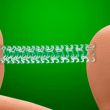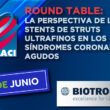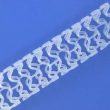Second generation drug-eluting stents have lower frequency of thrombotic complications and in-stent restenosis. While clinical results have significantly improved, having a 2-3% annual rate of these complications within the first year after angioplasty is still worrisome. This resulted in the development of stents with struts <70 µm (ultrathin), with bioresorbable polymer and abluminal cover. Stents<a href="https://solaci.org/en/2022/07/20/thin-vs-ultrathin-stents-1-year-clinical-results-after-ivus-oct-guided-implantation/" title="Read more" >...</a>
Two Safe Stents at Two Years in High Bleeding Risk
There is a consistent number of patients presenting high risk of bleeding. In this context, receiving dual antiplatelet therapy (DAPT) for 12 months would not be advisable. Even though the European and American guidelines recommend 1 to 6 months for chronic and acute syndromes in this group, these are often complex PCI cases, which makes<a href="https://solaci.org/en/2022/07/04/two-safe-stents-at-two-years-in-high-bleeding-risk/" title="Read more" >...</a>
Results of Zotarolimus-Eluting Stents vs Biolimus-Eluting Polymer-Free Stents After 2 Years. Are They Safe in Patients at High Risk for Bleeding?
The proportion of patients treated with coronary angioplasty who are at a high risk for bleeding is increasing. In this population, extended dual antithrombotic therapy increases the risk of bleeding. The 1-year randomized Onyx one study has demonstrated the non-inferiority of zotarolimus-eluting stents (ZES) vs. biolimus-coated polymer-free stent BioFreedom (DCS). Patients received dual-antiplatelet therapy (DAPT)<a href="https://solaci.org/en/2022/06/22/results-of-zotarolimus-eluting-stents-vs-biolimus-eluting-polymer-free-stents-after-2-years-are-they-safe-in-patients-at-high-risk-for-bleeding/" title="Read more" >...</a>
Should We Start Thinking Again About Bioresorbable Stents?
Coronary revascularization with drug-eluting stents (DES) is very frequent, especially in acute coronary syndromes, but these metallic stents are permanent foreign bodies that activate the entire inflammatory system. Using bioresorbable stents (BRS) emerged as an alternative to this challenge. Although the initial results of the ABSORB study were not as expected (probably due to a<a href="https://solaci.org/en/2022/06/09/should-we-start-thinking-again-about-bioresorbable-stents/" title="Read more" >...</a>
CRUNCH Registry: An Option for Underexpanded Stents
Coronary calcification hinders both stent transfer and implantation, and has been associated with a higher risk of complications. Coronary perforation is the worst of them. In turn, these calcifications affect the preparation of coronary plaque, resulting in an underexpanded stent (US), which is a strong predictor of restenosis and early thrombosis. For the management of<a href="https://solaci.org/en/2022/04/08/crunch-registry-an-option-for-underexpanded-stents/" title="Read more" >...</a>
Drug Eluting Stents: Does Strut Size Matter?
The benefit of first-generation Drug-Eluting Stents (DES) over Bare Metal Stents (BMS) is largely known. Moreover, technological developments have led to reduced strut size, biodegradable polymers, and new scaffolds, which in turn have led to improved outcomes. These are known as ultrathin stents, and its struts measure between 70 and 100 microns, which contributes to<a href="https://solaci.org/en/2022/03/23/drug-eluting-stents-does-strut-size-matter/" title="Read more" >...</a>
Watch again our Event Round Table: Ultrathin-Strut Stents as an Approach to Acute Coronary Syndrome
Watch again our Event Round Table: Ultrathin-Strut Stents as an Approach to Acute Coronary Syndrome
Last Bastion of Bare Metal Stents Finally Falls
Multiple studies have shown the safety and efficacy of drug eluting stents (DES) in patients with high risk of bleeding. Only one last bastion of bare metal stents (BMS) was left standing: vein grafts. With controversial evidence and different physiopathology, many still argued against DES in saphenous vein grafts. This multicenter study randomized patients with<a href="https://solaci.org/en/2021/03/01/last-bastion-of-bare-metal-stents-finally-falls/" title="Read more" >...</a>
Do Polymers Play any Role in Drug Eluting Stents
The fact that polymers can degrade after drug release seems interesting, more so when there appears to be evidence that they might cause inflammation (manly eosinophil infiltration) given its unwanted consequences. However, nice theories often get a reality check, and the polymer discussion is no exception. This article, soon to be published in J Am<a href="https://solaci.org/en/2019/09/25/do-polymers-play-any-role-in-drug-eluting-stents/" title="Read more" >...</a>









